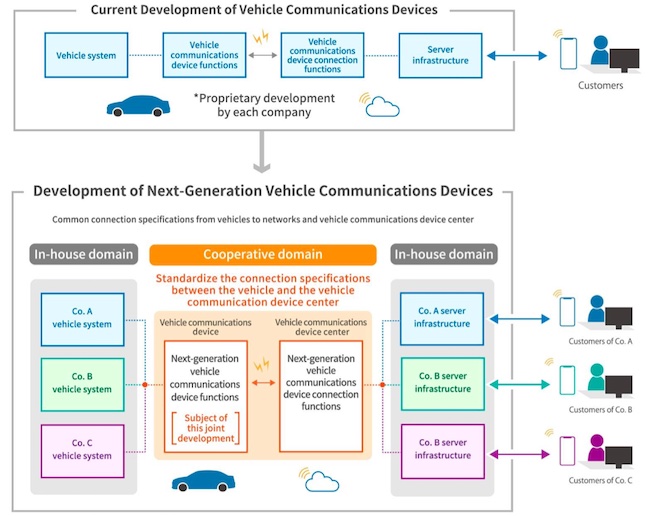WASHINGTON, May 25, 2021 /PRNewswire/ — U.S. News & World Report, the global authority in rankings and consumer advice, today unveiled the best Memorial Day Car Deals for 2021. The list features 11 vehicles, including five SUVs, three compact cars, two full-size pickup trucks and an electric car. These models are all available with excellent… Continue reading U.S. News Announces the Best Memorial Day Car Deals for 2021
Tag: Mazda
@Mazda: Mazda Appoints Jeffrey Guyton as President & CEO of Mazda North American Operations
IRVINE, Calif. (May 14, 2021) – Mazda today announced changes to its leadership team with the appointment of Jeffrey Guyton as President and CEO of Mazda North American Operations, effective June 24. This appointment includes oversight of Mazda North American Operations based in Irvine, Calif.; Mazda Canada Inc., based in Toronto; Mazda Colombia, based in… Continue reading @Mazda: Mazda Appoints Jeffrey Guyton as President & CEO of Mazda North American Operations
@Mazda:
IRVINE, Calif. (May 21, 2021) – For more than 100 years, Mazda has successfully navigated shifting consumer needs and an ever-changing industry with beautifully designed vehicles that are fun to drive. As consumer interests continue to evolve, Mazda will discontinue CX-3 and Mazda6 for the 2022 model year. Although these two vehicles will be leaving… Continue reading @Mazda:
China’s state-owned Changan Automobile plans to list EV unit on STAR Market
Chinese state-run automaker Chongqing Changan Automobile plans to list its electric vehicle (EV) unit on Shanghai’s Nasdaq-style STAR Market, three sources briefed on the matter said, to fund a rapid expansion of its business. Changan, based in the southwestern city of Chongqing, holds 48.95% of the unit, which makes entry-level and mass-market electric vehicles. The… Continue reading China’s state-owned Changan Automobile plans to list EV unit on STAR Market
Chinese automaker Changan aims to list EV unit on STAR Market -sources
Changan also plans to develop electric light commercial and hydrogen fuel cell vehicles, the three sources said. By Yilei Sun and Tony Munroe BEIJING: Chinese state-run automaker Chongqing Changan Automobile plans to list its electric vehicle (EV) unit on Shanghai’s Nasdaq-style STAR Market, three sources briefed on the matter said, to fund a rapid expansion… Continue reading Chinese automaker Changan aims to list EV unit on STAR Market -sources
Toyota production to top 10m for first time in fiscal 2022
TOKYO — Toyota Motor plans to produce a total of 10.4 million units globally combining its Toyota and Lexus brands for the fiscal year 2022 ending in March 2023, Nikkei learned Saturday. This marks the first time the auto group will top 10 million units, boosted by increased demand in the wake of successful vaccination… Continue reading Toyota production to top 10m for first time in fiscal 2022
Mazda informa los resultados de ventas de abril
IRVINE, California, 3 de mayo de 2021 /PRNewswire-HISPANIC PR WIRE/ — Mazda North American Operations (MNAO) informó hoy que el total de ventas de abril fue de 31,117 vehículos, lo que significa un aumento del 184.4 por ciento en comparación con abril de 2020. Las ventas del año a la fecha sumaron un total de 114,375 vehículos; un aumento… Continue reading Mazda informa los resultados de ventas de abril
Porsche’s hydrogen-based eFuel turns gas guzzlers into eco-cars
FRANKFURT, Germany/TOKYO — While other automakers race to field electrified vehicles, Porsche looks to develop a fuel that will keep its iconic gasoline-burning cars relevant in the decarbonization era. Porsche’s eFuel, which is under development, combines “green hydrogen” generated by renewable energy with carbon dioxide captured from the atmosphere. The methanol produced from the process is converted… Continue reading Porsche’s hydrogen-based eFuel turns gas guzzlers into eco-cars
@Toyota: Suzuki, Subaru, Daihatsu, Toyota and Mazda Reach Agreement on Joint Development of Technical Specifications for Next-generation Vehicle Communications Devices
Suzuki Motor Corporation (Suzuki), Subaru Corporation (Subaru), Daihatsu Motor Co. Ltd. (Daihatsu), Toyota Motor Corporation (Toyota), and Mazda Motor Corporation (Mazda) reached an agreement to jointly develop technical specifications for next-generation vehicle communications devices and to promote the common use of communications systems, by using connected services to link automobiles and society with the aim… Continue reading @Toyota: Suzuki, Subaru, Daihatsu, Toyota and Mazda Reach Agreement on Joint Development of Technical Specifications for Next-generation Vehicle Communications Devices
@Mazda: Suzuki, Subaru, Daihatsu, Toyota and Mazda Reach Agreement on Joint Development of Technical Specifications for Next-generation Vehicle Communications…
Toyota City, Japan, Apr 27, 2021 – (JCN Newswire) – Suzuki Motor Corporation, Subaru Corporation, Daihatsu Motor Co. Ltd., Toyota Motor Corporation, and Mazda Motor Corporation reached an agreement to jointly develop technical specifications for next-generation vehicle communications devices and to promote the common use of communications systems, by using connected services to link automobiles… Continue reading @Mazda: Suzuki, Subaru, Daihatsu, Toyota and Mazda Reach Agreement on Joint Development of Technical Specifications for Next-generation Vehicle Communications…
